Have you ever wondered how results from scientific studies make their way into policy and influence government decisions? Read about the experiences of Sammie Buzzard, University of Reading, who spent her summer working for a government body in Westminster, London, UK.
This summer I had the opportunity to take some time away from my usual Ph.D. work and spend 3 months working for the Government Office for Science in London, or ‘GO Science’ as it is known. My placement was made possible by a scheme set up by the UK research councils that allows PhD researchers to spend some time in a policy organisation. Through this, researchers can gain an insight into how science fits into policy and pick up new skills in areas such as communication and managing multiple tasks. In return, the policy organisations get some insight into how academics think and some of the cutting edge science that is currently going on.
What is the Government Office for Science?
Based in Westminster in the heart of London’s political centre, GO Science exists to ensure that the UK Government’s policies and decisions are informed by the best scientific evidence. It is headed up by Sir Mark Walport, the Government Chief Scientific Adviser, whose role is to advise the Prime Minister and Cabinet. GO Science works to ensure and improve the quality and use of scientific evidence and advice in government. They also provide scientific advice in the case of emergencies, through the Scientific Advisory Group for Emergencies (SAGE). This includes international emergencies, such as advising the government on their response to the ebola crisis for example.
Becoming a specialist whether you want to or not…
One thing that really surprised me about GO Science was the number of people with a scientific background who work there. There were many people with PhDs and several who had done post-doctoral positions before joining the GO Science. This combination of scientific thinkers and those who had come from many different backgrounds, including career civil servants, means that there are a great range of skills available. If you find that you are not so good at something or are nervous about writing a briefing, there will always be someone who will be willing to go through it with you. It also means that with the number of contacts that the office have, both in academia and industry, expert advice can be found on virtually any area.
It also means though that if you have a scientific specialism then you have to be prepared to be asked all about it. The Chief Scientific Adviser had recently been in Svalbard and this led to me being asked a whole range of questions from whether or not he has to have an armed guard when in the Arctic to the state of the sea ice. The fact I do mainly care (at least for now) about the South Pole did not matter!
Fortunately, I was also given the opportunity to present my own work on the surface melt lakes on the Larsen C Ice Shelf to my colleagues. For me, this was a hugely valuable opportunity to communicate my research to a mixed audience and get some unexpected questions from the fresh viewpoints that those from outside of glaciology can provide.
… a specialist in many subjects!
One of the main differences I found from my normal day job as a PhD researcher was the variety of topics and responsibilities. My work covered subjects as diverse as finance, biological materials and technologies of the future. I had the chance to experience several different areas of work, from writing briefing notes for the chief scientist, to helping check facts for a presentation on energy that he was giving to the public. It was very different to PhD life in that I would often have several pieces of work ongoing in completely different areas and often for different people, so it involved a lot more juggling of tasks than my average day buried in Matlab code.
Although it was a challenge to have to learn so much about subjects I knew very little about very quickly but one which I enjoyed and a useful skill that I will take away with me. I particularly enjoyed the chance to work for the Council for Science and Technology, a group of hugely influential people who provide high level advice to the Prime Minister. The group consists of university vice chancellors, business leaders and the heads of learned societies and seeing the ways in which they work and make decisions was fascinating.
An additional thing that I found very different to academia was the level of accountability for my work. If my PhD work goes wrong then ultimately it is my responsibility but at GO Science often more than one person would check a piece I wrote before it was passed on or sent out. This did make me feel much more confident in my work knowing I was not going to put anything completely ridiculous in front of chief scientific adviser, but I did begin to miss being able to choose and have responsibility for the direction of my own work in the way that I have with my PhD.
What is next?
I would highly recommend opportunities like this for other PhD students, or scientists at any stage in their career. Knowing where the work that we do ultimately is going and what policy makers care about is incredibly useful. Researchers can also work in Parliament and non-government organisations such as the British Library and the Royal Society. The scheme has recently recruited for next year’s interns and applications normally open each summer for the next year’s intake.
Although I plan to continue in research after I finish my PhD the skills I gained from my time out will definitely be useful far beyond writing up, which I now really must get back to…
Edited by Nanna Karlsson
Sammie Buzzard is a PhD student in the department of Meteorology at the University of Reading. After completing a Master’s degree in mathematics she is now researching surface melt on the Larsen C Ice Shelf. She blogs about polar science, life as a PhD student and cake (because cake is essential for research) at Ice and Icing and can be found tweeting at @treacherousbuzz.

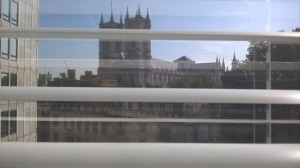
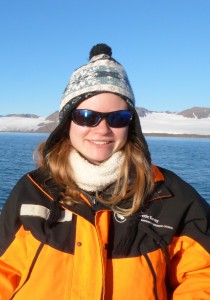
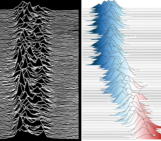
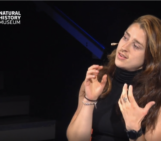
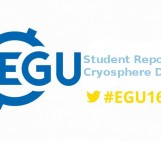
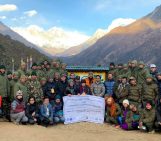
Pingback: GO Science: Filling the Gap between Science and Politics | Think: Public Engagement